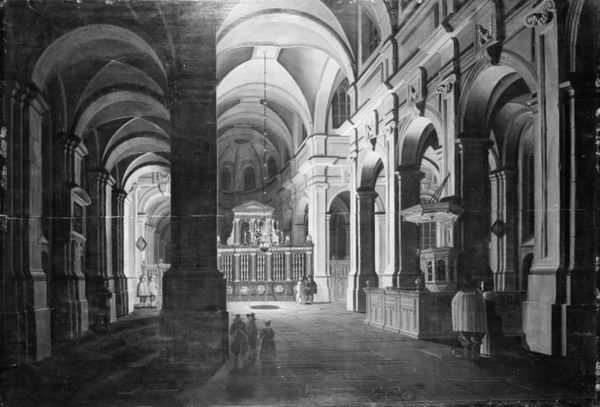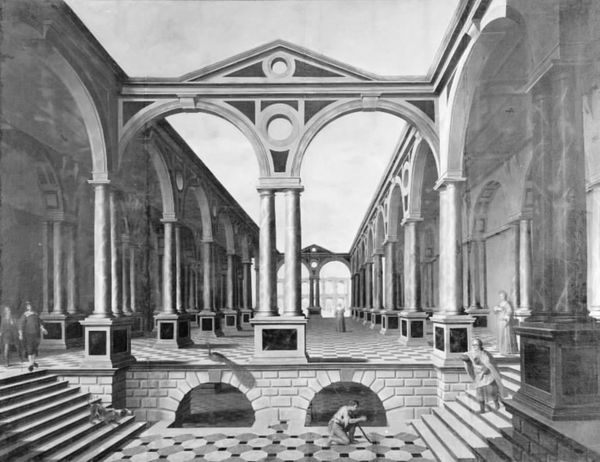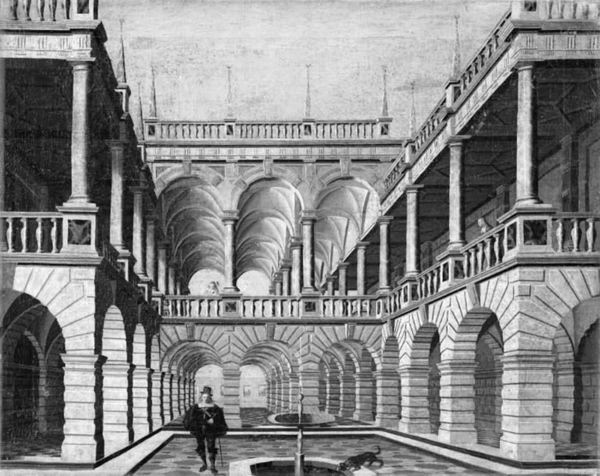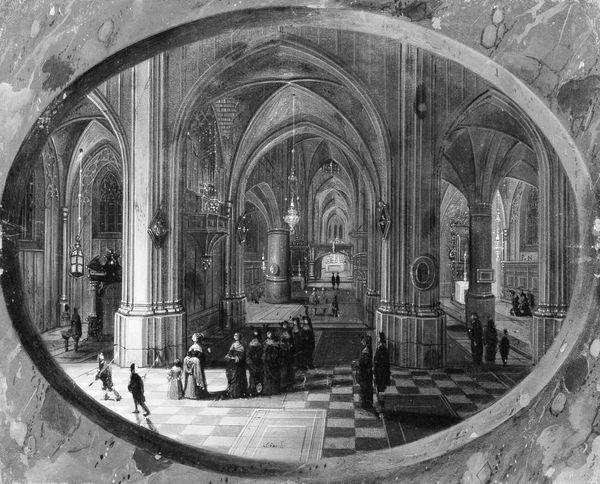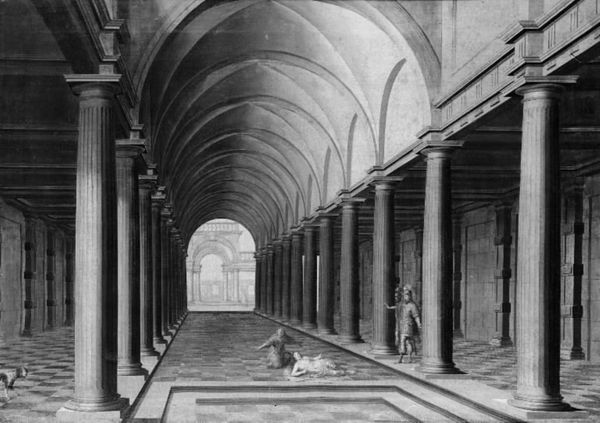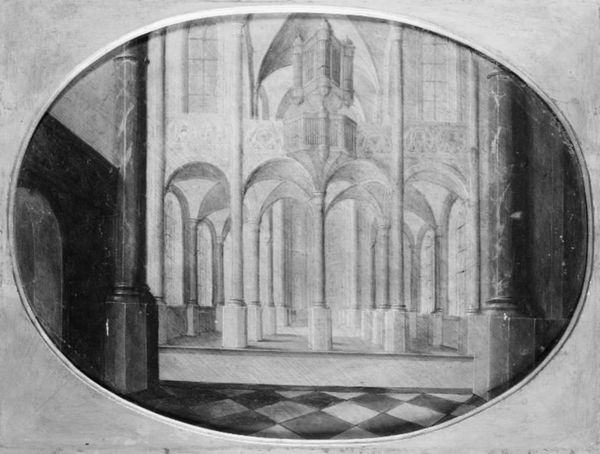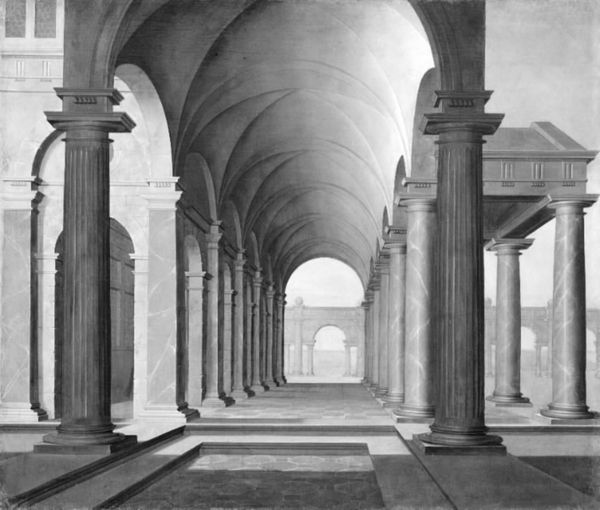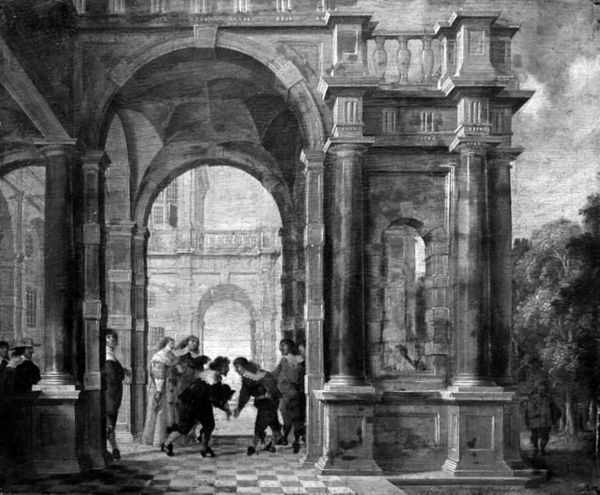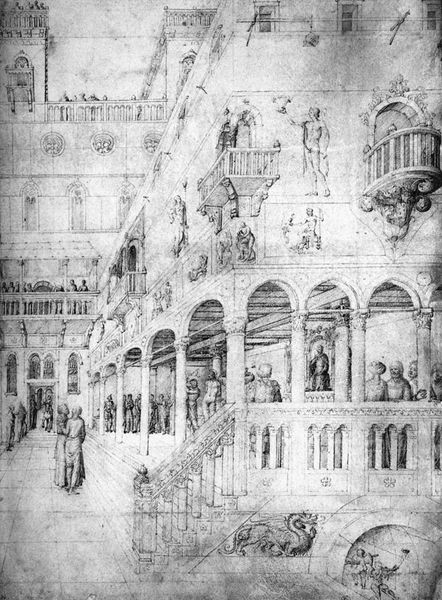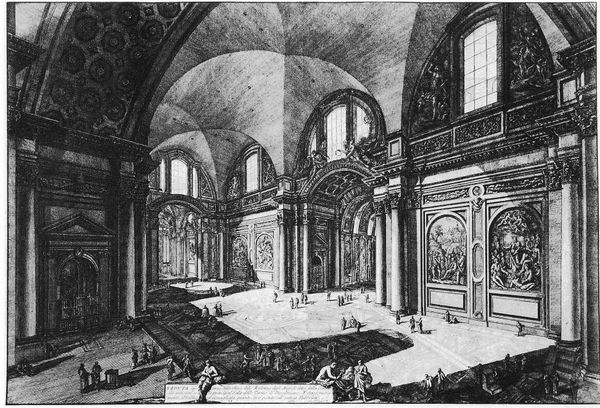
drawing, charcoal, architecture
#
architectural sketch
#
drawing
#
building study
#
architectural landscape
#
sculpture
#
landscape
#
perspective
#
charcoal drawing
#
geometric
#
charcoal
#
architecture
Dimensions: 188.5 cm (height) x 192.3 cm (width) (Netto)
Editor: So, this is "Columns," a charcoal drawing dating from 1607 to 1654, attributed to Gabriel Engels. It’s currently held at the SMK in Copenhagen. The drawing presents this really complex architectural space, almost like an Escher painting. It feels a bit theatrical, almost stage-like. What do you see in this piece, in terms of its broader context? Curator: The theatricality you noticed is key. Consider the 17th century, a period rife with social hierarchies reinforced by opulent displays. This drawing, likely a design for a grand building or stage set, visualizes power. The soaring columns, the impossible perspective, they aren't just architectural whimsy. What effect do you think the severe, rigid geometry would have on the people that were in the space represented? Editor: Well, it feels overwhelming, almost intimidating. Like you’d feel really small within such a structured, almost sterile environment. Curator: Precisely. That's the power dynamic at play. The artist isn’t merely designing a building, they’re crafting a social space. The elite could reinforce their dominance visually, architecturally. Do you notice anything about who seems to occupy the space? What is it that they might be doing? Editor: They are...small and scattered. Some are carrying things. Curator: Exactly. These drawings show those with wealth and power at play. What kind of a social commentary might the artist have been making? Is the perspective skewed as a subtle gesture? Editor: So, the artist may have been questioning the power structures? Curator: It’s possible. This drawing might be a critique masked as celebration, a subtle questioning of the rigid social order. Or it could also reflect how powerless people were compared to royalty at that time. Thinking about it within this context opens up interesting questions. Editor: I see that now. It's fascinating how much social commentary can be embedded within something that, at first glance, just seems like an architectural drawing. Curator: Indeed. It shows us that art isn't created in a vacuum. By exploring its historical and social roots, we gain a deeper appreciation of the narratives they convey.
Comments
No comments
Be the first to comment and join the conversation on the ultimate creative platform.
